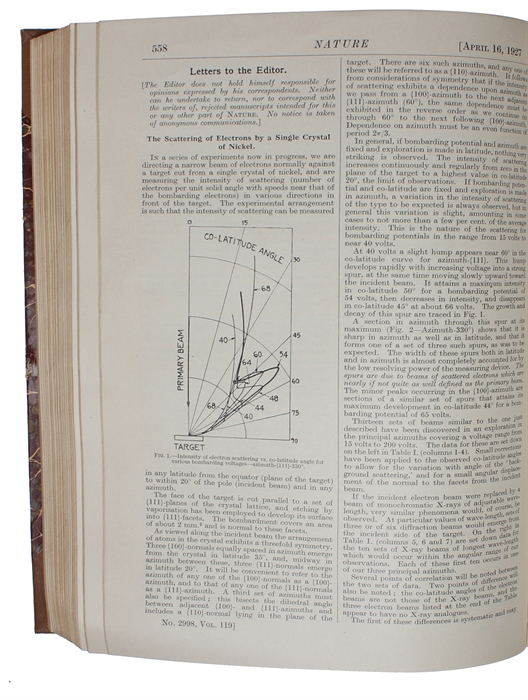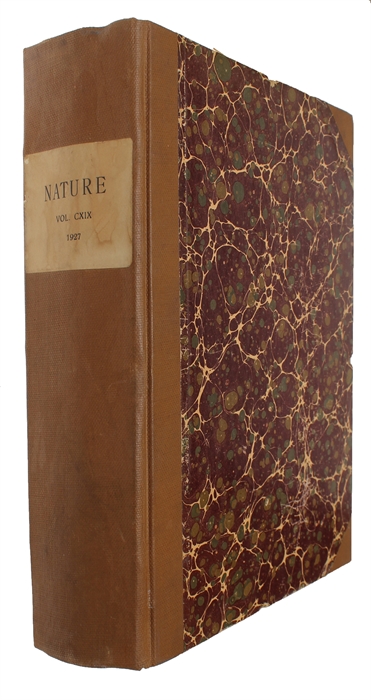ELECTRON DIFFRACTION - NOBEL PRIZE IN PHYSICS 1937.
DAVISSON, C. [CLINTON] & L. H. GERMER [LESTER].
The Scattering of Electrons by a Single Crystal of Nickel.
London, Macmillian and Co, 1927.
Royal8vo. Bound in contemporary half cloth with whilte title paper-label to spine. In "Nature", vol. 119, 1927, entire volume offered. Stamp to front free end-paper and title-pages of each issue.Light wear to extremieies, otherwise fine. Pp. 558-560. [Entire volume: LIX, (1), 948, 100].
First edition of this seminal and highly influential paper on electron diffraction. Today the paper is regarded as one of the most important in the entire journal of Nature, and it led directly to Davisson receiving the Nobel Prize in physics in 1937. It advanced understanding of physics at the quantum level and led to inventions such as the electron microscope. Davisson and Germer's confirmation of the de Broglie hypothesis if today known as the Davisson-Germer experiment.
"Davisson's investigations on the scattering of electrons entered a new phase when, in April 1925, his taget was heavily oxidized by an accidental explosion of a liquid-air bottle. He cleaned the target by prolonged heating and then found the distribution-inangle of the secondary electrons completely changed, new showing a strong dependence on crystal direction. Prior to the accident the target had consisted of many tiny crystals, but heating converted it to several large crystals. Davisson and L. H. Germer, who had replaced Kunsman before the accident, at once began bombarding targets of single crystals. [...] When Davisson returned from England, he and Germer began a systematic research for some sort of interference phenomenon, and in January 1927 they observed electron beams resulting from diffraction by a single crystal of nickle. The results were in good agreement with de Broglie's prediction. For his confirmation of electron waves Davisson shared the Nobel Prize in physics in 1937 with G. P. Thomson." (DSB, III, 597b-598a).
Order-nr.: 59913


